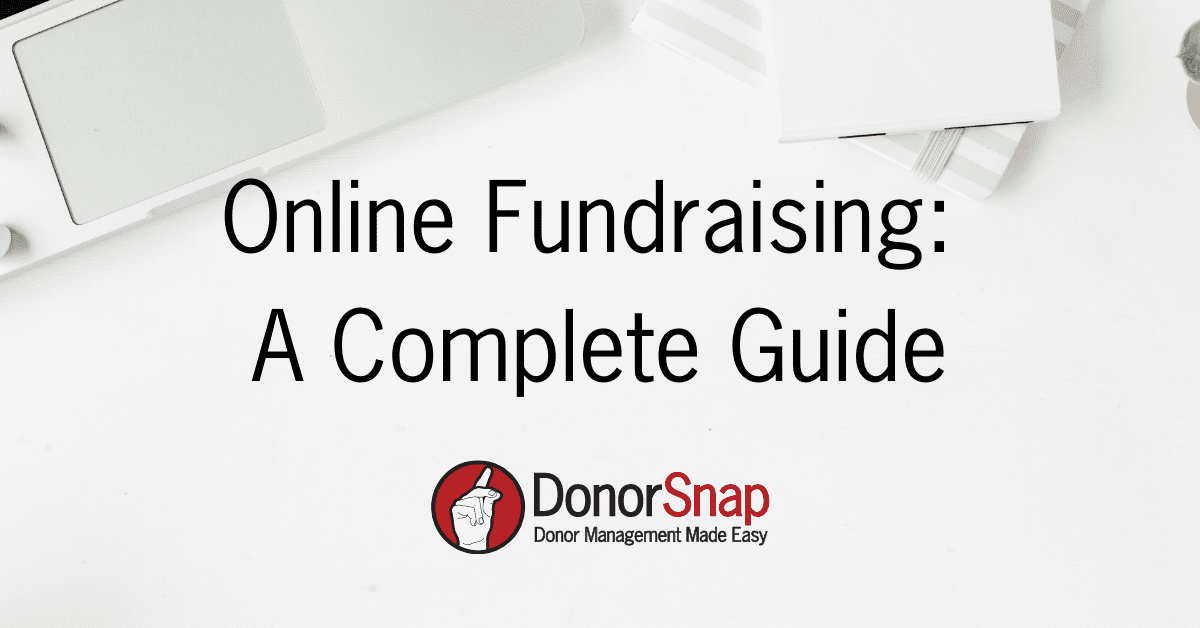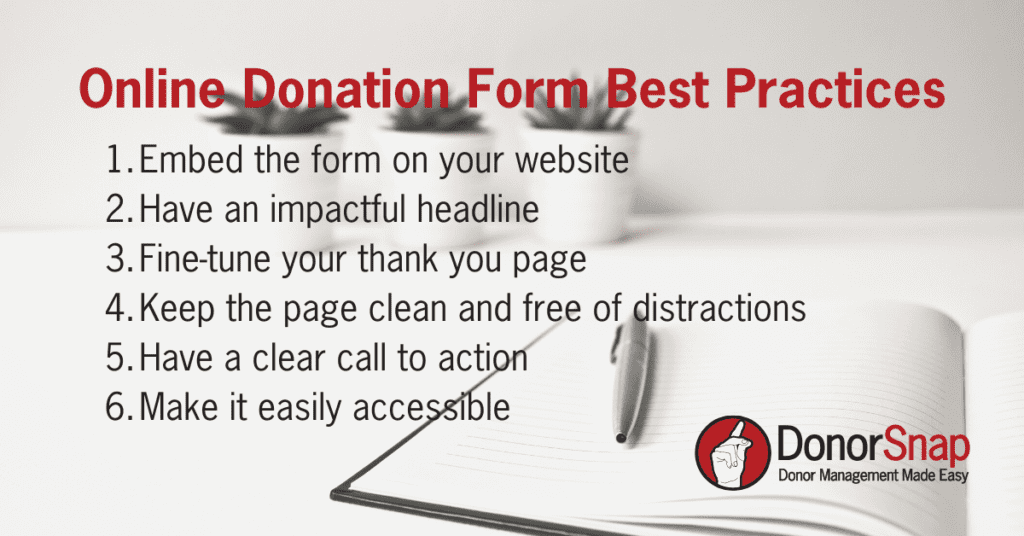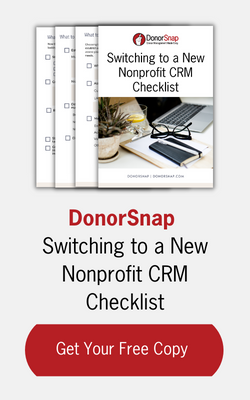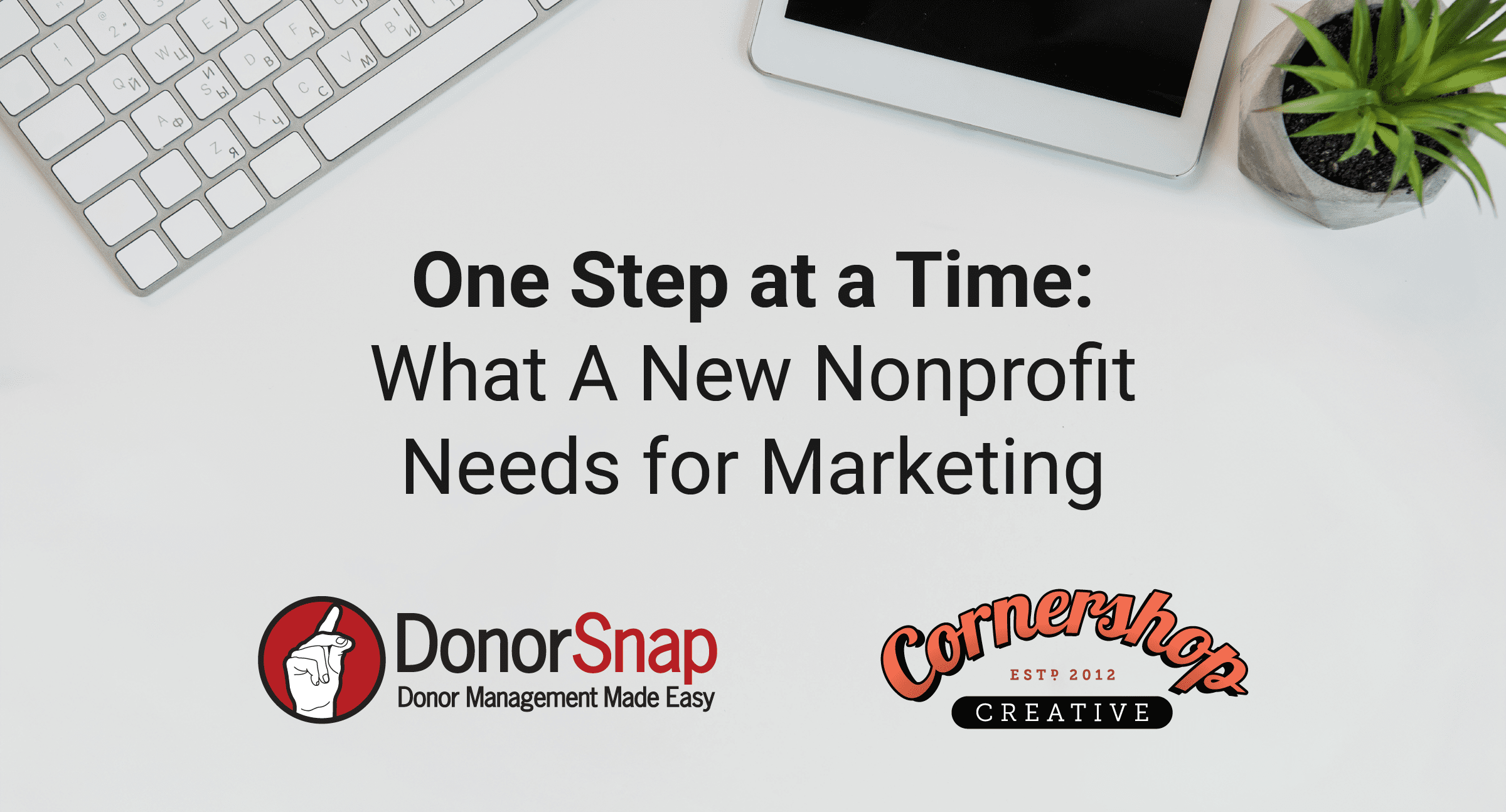Online fundraising gives your nonprofit new avenues for growth. Between social media, your website, and other digital tools, there are endless opportunities to connect with new audiences and raise more funds.
According to Philanthropy News Digest, online giving rose more than 20% in 2020, and has grown steadily since. Collecting online donations is now an essential part of most nonprofits’ fundraising strategies. If you want to make the most of your online efforts, keep reading for practical tips and strategies.
What is Online Fundraising?
Online fundraising is more than simply collecting donations through your website. It’s about sharing your story in new ways, engaging with broader audiences, and building a community of supporters who connect with your mission.
Why Online Fundraising Matters for Nonprofits
Online fundraising expands your nonprofit’s reach and offers powerful tools for engagement. It can help you attract new donors, deepen relationships, and inspire recurring giving from supporters near and far.
Expand Your Reach and Increase Donations
Traditionally, nonprofits relied on mailings and in-person events, limiting their donor pool to their immediate community. With the internet, your potential audience is global. By leveraging social media and email, you can tell your story to thousands of people for a fraction of the cost—turning new audiences into loyal donors.
Engage Younger Donors
Younger generations are active online, especially on social media. Rather than pulling them away from those spaces, meet them where they already are. Millennials, for example, are highly motivated to give through social media. Creating engaging, shareable content helps capture their attention and inspire giving.
Encourage Recurring Giving
Online donations make it easy to set up recurring gifts. On average, donors who give monthly contribute 42% more over time. Encouraging recurring donations not only boosts revenue but also builds donor loyalty.
Hint: DonorSnap’s online forms make it easy to include a recurring giving option.
Tools to Help You Get Started
A Modern, Mobile-Friendly Website
Your website is the foundation of your online fundraising. It should be current, easy to navigate, and mobile-friendly. According to Qgiv, 75% of young donors are turned off by outdated websites. Make sure your site looks professional and your donation forms display correctly on mobile devices.
Online Donation Forms
Online fundraising starts with a simple, effective donation form. DonorSnap’s responsive forms embed directly into your website and automatically feed donations into your CRM.
Best Practices for Online Donation Forms:
Embed the giving form on your website
When someone is making an online donation, they want to be sure they are in the right place. Therefore, it is important your donation form doesn’t change from the look and feel of your website. Unfortunately, some donation pages live on restrictive third-party websites without much customization. In turn, this could cause a donor to abandon the donation and make your non-profit lack credibility.
Craft an impactful headline
Your online donation form should be clear and free of distractions. For this reason, a powerful headline should be the main text on your page. Think of a short and compelling message that will drive your visitor to take action.
Fine-tune your thank you page
After someone makes an online donation they are generally redirected to a thank you page. Often, a thank you page can be overlooked and is a generic thank you message. Be thoughtful about the message on your thank you page. For example, highlight how the donor’s gift will make a difference. Also, you could direct them to another part of your website if they want other opportunities to help.
Keep the page clean and free of distractions
Your donation page should serve one purpose, to drive donations. Because of this, you don’t want any additional or distracting information. Be sure your form collects the necessary information without being too long. You can put other forms for different purposes on other parts of your website, so be sure the donation form is dedicated to just that.
Communicate a clear call to action
Your donation page should drive a single action. A typical call to action is “donate now”, but you will improve online donations with a more powerful message. To start, think about how the donation will make a difference. Something like “Save a Life, Give Today” may trigger more emotion than a simple “donate now”.
Make your Donation Page Easily Accessible
Your website should have a clear link to your donation form on every page of your website. An easy way to do this is to anchor a donate button to the very top menu and the footer of your website. If you send out an email newsletter, include a donate button throughout the newsletter. Your social media accounts should all link to your donate page. In addition, if you are sharing social content as it is relevant to raising funds, include a link to your donation page in the post.
Nonprofit CRM
When you collect online donations you will want to keep track of them. Most CRMs will integrate with donation forms and feed the donor information right into your database. DonorSnap’s online forms allow you to collect online donations and load them into your database in a few clicks.
Not all nonprofits use a CRM. Some of them will use PayPal to collect online donations and keep records in excel. Although this option works for those without a CRM, there are reasons that PayPal is not the best option for collecting online donations. It is worth investing in a CRM that works with a payment processor and integrates with online forms.
Social Media
You now have the opportunity to tell your story to people further away through social media. According to empower.agency, 55% of people who engage with nonprofits on social media end up taking some sort of action. While nonprofits once aimed to gain supporters in their direct area, they now have the opportunity to connect with people further away.
In addition, your supporters are going to be your biggest advocates, so give them something to share. The great news? Nonprofit organizations are content machines. Brainstorm with your team to come up with content ideas about how your organization has made an impact. Creating shareable content will expand your reach, improve your trustworthiness, and ultimately increase online donations. With 90% of people age 18-29 using social media regularly, social media is also a great way to reach the younger giving pool.
Social Media Best Practices for Online Fundraising
- Plan social media content to complement your appeal campaigns
- Create a content calendar to be sure you are consistently posting
- Use hashtags to reach more people
- Add a Donate Button to your Facebook and Instagram accounts
- Create shareable content your supporters will be excited to share
Social Media “Shareable Content” Ideas
- Statistics on the cause you support (ex: how much plastic is found in our ocean)
- Inspirational quotes as they relate to your cause (ex: quotes about the healing power of art for an arts org)
- Donor/Volunteer/Employee spotlights: your readers will want to learn more about the people behind your organization
- Tips on how individuals can help support your cause (ex: ideas for using less plastic around your home)
Analytics Tools
When collecting online donations, it is helpful to see web traffic to determine the success of your online campaigns. Google Analytics is free and you can set it up on your website. Once set up, you can measure your web traffic, see what pages users visited, and even track donations. Also, having good analytics tools will help you update your website over time to improve the user experience and ultimately lead to more online donations.
An Email List
Having a strong email list is important for today’s nonprofits. If you haven’t already, check out Nonprofit Email Marketing: 8 Best Practices, to see how a successful email strategy will help your organization. Likely, a new visitor to your website will want to learn more about your organization and email is the perfect way to share this with them.
There are a number of ways to build your email list. The easiest way is to have a signup form on your website. If you are using DonorSnap, you can set up a responsive form for collecting emails. Also, if you send out remittance envelopes, have a spot for donors to leave their emails.
A Blog On Your Website
Your website provides you with the opportunity to share more about your organization. Therefore, having a blog on your website is a great way to draw in prospective donors. Whether you know it or not, your nonprofit is full of content that readers want to consume. Having a blog is a great way to share impact stories and more information about your organization. It also creates great content to share on social media. In addition, blogs are a great way to draw in donors through inbound tactics.
Inbound marketing is the process of creating blog content that answers readers’ questions. As a nonprofit, you are likely a subject matter expert in the area you serve. For example, if you are an animal rescue, you might create blog content with helpful tips on training a rescue dog. Then, when people search for tips on rescue dogs, they may land on your website. It is a way of bringing in supporters by providing answers to their questions. In turn, this also builds credibility and trust.
Getting Started: Developing Your Online Fundraising Plan
When embarking on any sort of fundraising journey, it is important to have a plan. Your online fundraising should be no different. Here are some steps to help you get started with your online fundraising plan:
Conduct a SWOT Analysis of Your Online Fundraising

A SWOT analysis looks at strengths, weaknesses, opportunities, and threats. This can be a great way to start brainstorming with your team. To start, work through the different areas and ask yourself specific questions that pertain to each:
Strengths: What resources does your nonprofit have that will aid in online fundraising? For example, staff talent, stories collected, connections in the community, and so on.
Weaknesses: What areas do you lack that might make online fundraising more of a challenge? For example, a website that is not up to date, or a small team with limited time.
Opportunities: What new opportunities would online fundraising bring about? For example, can you reach a new demographic?
Threats: What threats could collecting donations online pose. For example, if you don’t have a good process in place for thanking online donations, could this hurt your fundraising efforts?
Use an Online Fundraising Plan Template
Having a plan written out will help you succeed. Therefore, a good fundraising plan template will help you organize your team and set realistic goals. Depending on your organization, you may also need approval from your board. So having a plan in an organized template will help you present your case.
Your fundraising plan should include how much money will be spent, how much time will be spent by staff, and realistically how much you think you can collect. These details will help you start out and allocate the proper funds and time to succeed.
Create your content calendar
In addition to your fundraising plan, you should create a content calendar. Having a content calendar will help keep you organized and be sure your messages are spread out over the appropriate amount of time. This can be as simple as using a google calendar to mark when certain content will go out. Or, websites like Hubspot have a wealth of content calendars and templates that could also help your nonprofit.
If you don’t know where to start, think about important dates for your organization. Below are some ideas to help you get started:
1. Giving Tuesday
Giving Tuesday is held the Tuesday after Black Friday, and was started as a way to encourage people to donate during the holidays. It has grown into a global movement that all nonprofits should be taking advantage of. Nonprofit organizations often have a campaign theme around Giving Tuesday and will share content leading up to it. On the day, it is important to stay active on social media, as well as send out emails to encourage people to donate.
2. Your annual appeal
It is common to run an online campaign alongside your annual appeal that goes out in the mail. You can create content to accompany your print mailing, to target supporters at multiple touchpoints. Be sure that your lists are clean and organized ahead of time to save you trouble as you run the campaign.
3. Local giving days
Many states run their own local giving days. For example, in Connecticut, the Connecticut Community Foundation runs Give Local, which is a give-a-thon designed to encourage local giving in the community.
4. Events you are hosting
You also should use the power of the internet to promote events you are hosting. Whether they are fundraising events or community events, this content will help your community stay engaged with your cause.
5. Cause days
Cause days are a great way to ensure you have content ready each month. There are many online resources that share cause days, so you can pick out the ones that are more relevant to your organization. Be sure to take advantage of these days, get social, and use hashtags to help drive more donations to your nonprofit.
Summary
In summary, there are many tools at your disposal to improve your online fundraising. To get started be sure you have the following items to successfully collect donations online:
- A Good Website
- Online Donation Forms
- A Good CRM
- Social Media
- Analytics Tools
- An Email List
- A Blog on Your Website
If you have all of these tools you can start developing your online fundraising plan. It may be helpful to conduct a SWOT analysis and refer to a fundraising template to help get yourself organized. From here you can develop a content calendar and begin to spread your message.
With all of these tools and practices in place, you can reach new demographics and solicit more donations. This is an opportunity to share your story in a new way and spread awareness about your cause even further.





